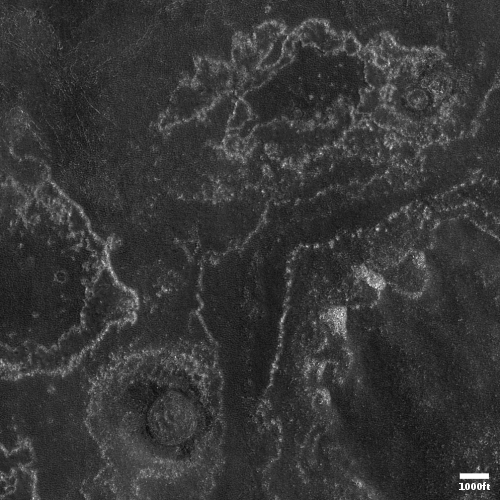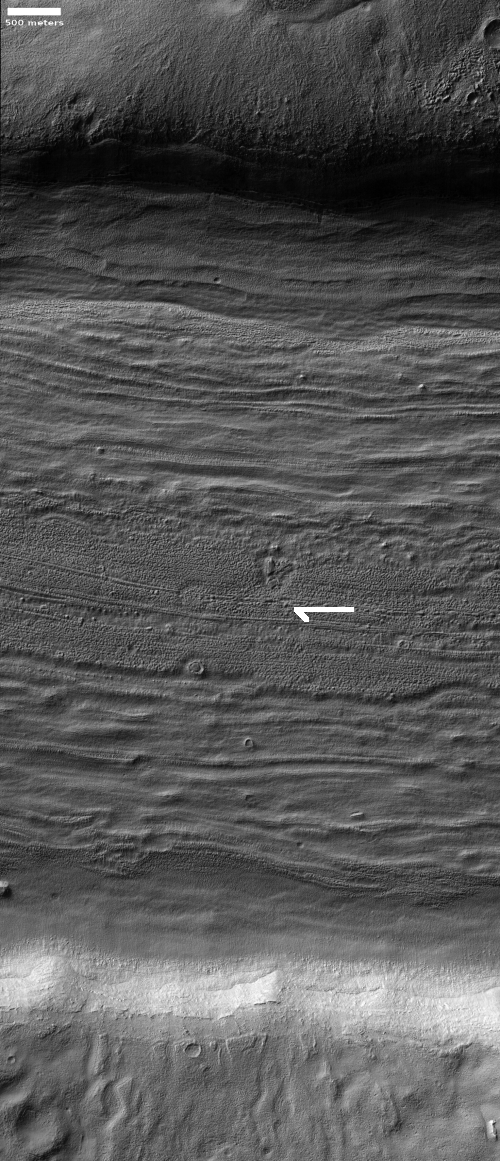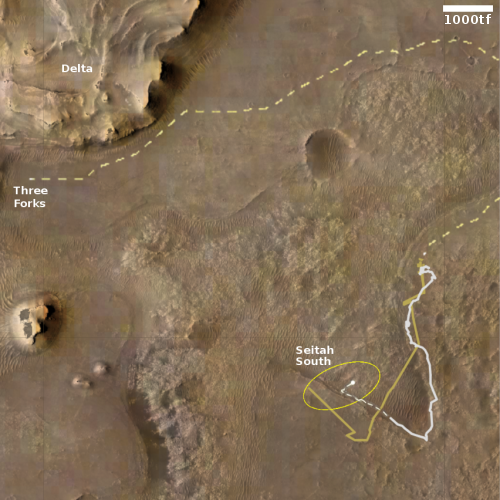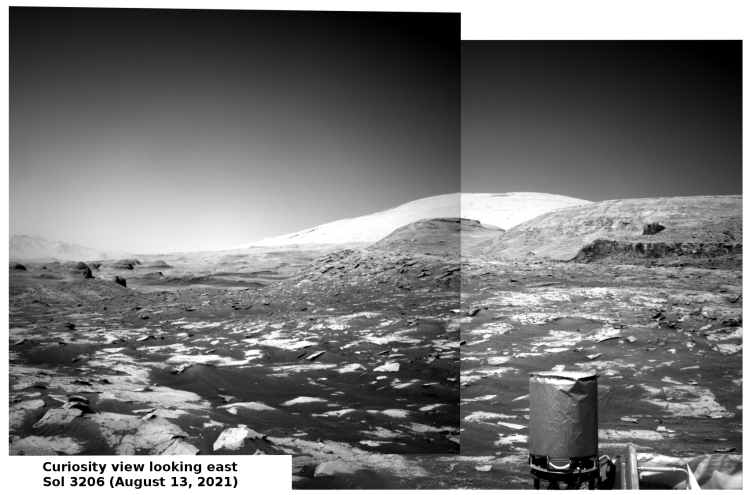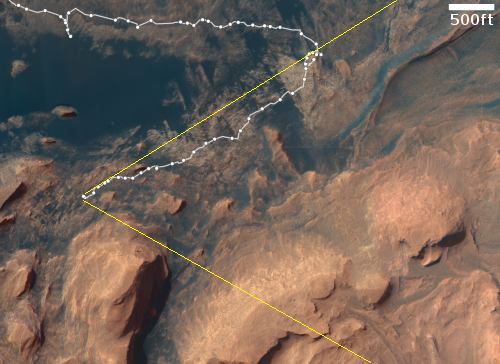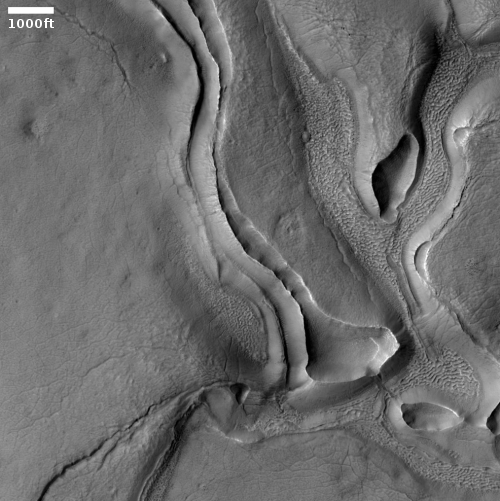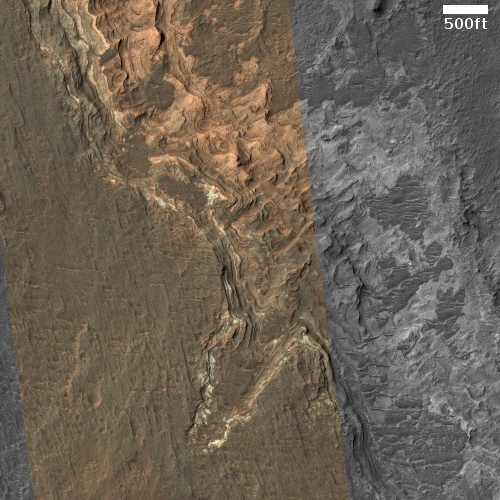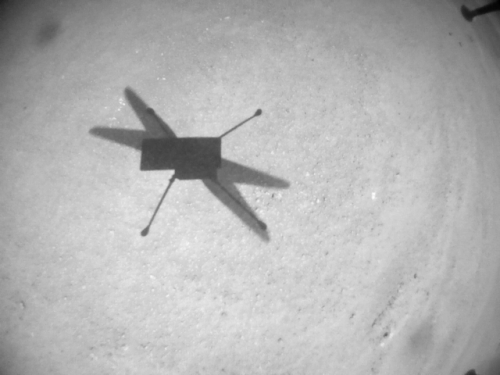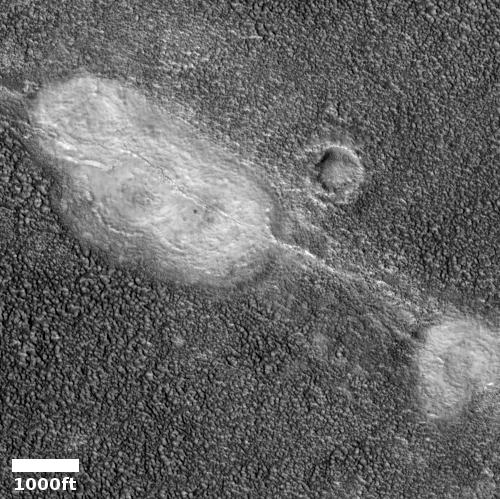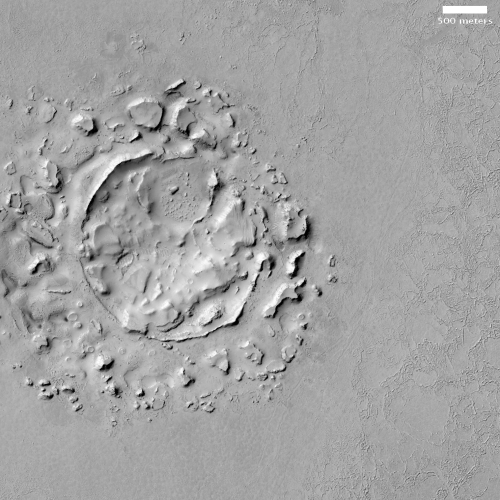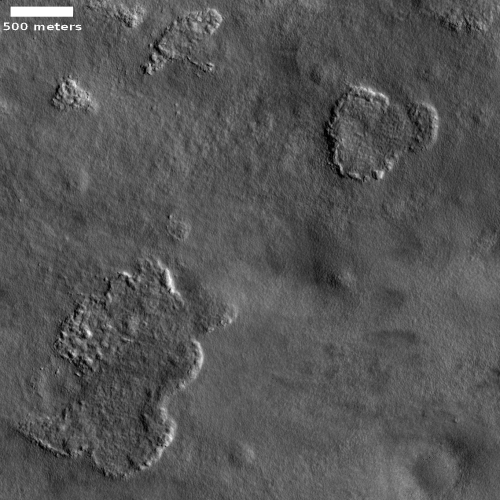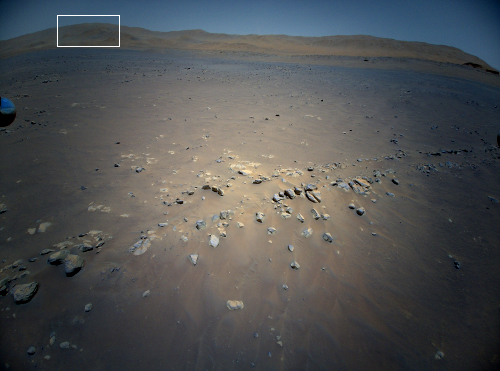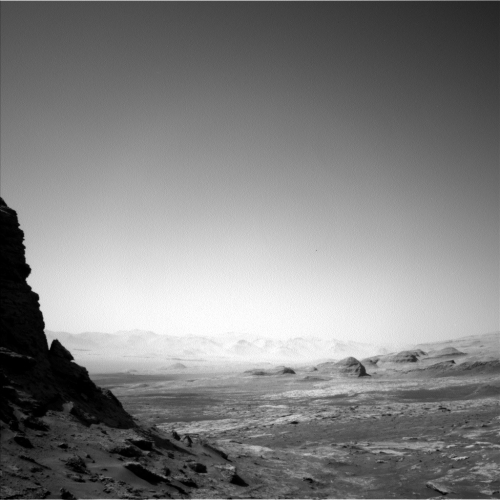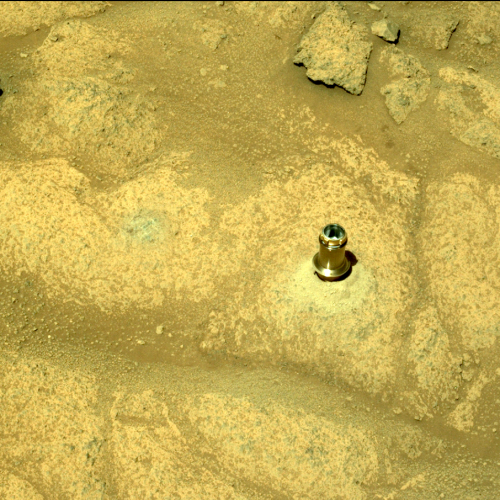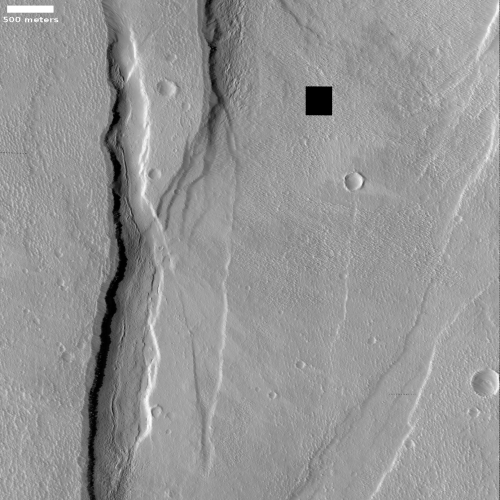A dry bedrock Martian crater floor?
Cool image time! The photo to the right, cropped and reduced to post here, was taken on June 21, 2021 by the high resolution camera on Mars Reconnaissance Orbiter (MRO). The location is a very eroded crater at about 26 degrees north latitude. The image shows the crater’s crater floor, with a variety of bedrock-type features, sharp ridges, abrupt scarps, and flat smooth plateaus, with a hint of lobate glacial flows in the image’s southeast quadrant.
At 26 north latitude, it is unlikely that anything here is icy, unless it is very well protected by debris. Most of these features are almost certainly bedrock, though their formation could very well have been shaped by ice in past eons when this location was more amenable to water ice.
The wider MRO context camera image of the entire crater, plus the overview map, give a larger picture, and raise some interesting questions.
» Read more
Cool image time! The photo to the right, cropped and reduced to post here, was taken on June 21, 2021 by the high resolution camera on Mars Reconnaissance Orbiter (MRO). The location is a very eroded crater at about 26 degrees north latitude. The image shows the crater’s crater floor, with a variety of bedrock-type features, sharp ridges, abrupt scarps, and flat smooth plateaus, with a hint of lobate glacial flows in the image’s southeast quadrant.
At 26 north latitude, it is unlikely that anything here is icy, unless it is very well protected by debris. Most of these features are almost certainly bedrock, though their formation could very well have been shaped by ice in past eons when this location was more amenable to water ice.
The wider MRO context camera image of the entire crater, plus the overview map, give a larger picture, and raise some interesting questions.
» Read more



